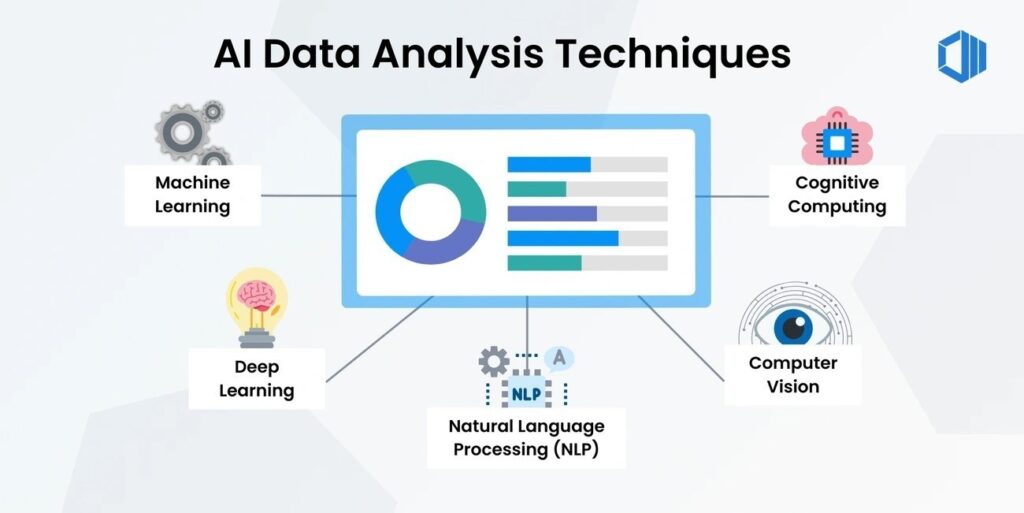AI pricing analytics is transforming industries and changing how businesses work. A strong pricing strategy isn’t just helpful – it’s crucial to stay competitive and grow. Many top companies still struggle to get hybrid pricing models right for their AI-powered products and services.
AI products don’t fit well with traditional software pricing models. AI-driven pricing needs completely different approaches because it creates unique value and gets used differently. GenAI brings a complete transformation that needs new pricing models to capture its real worth.
Smart companies use dynamic pricing algorithms and machine learning tech to stay ahead of old strategies based on manual changes or rough guesses. AI makes businesses more profitable by automating tasks, predicting trends, and creating tailored user experiences. Take Zendesk as an example – they’ve found success with a mixed approach that charges per seat for human users and per resolved ticket for AI agents.
This piece will show you why many hybrid pricing models don’t work, clear up common myths about AI pricing analytics, and help you build pricing strategies that deliver results. These insights are great ways to get more profit and avoid pricing mistakes that get pricey. They work equally well for SaaS founders, e-commerce leaders, and professional service providers.
Why Hybrid Pricing Fails Without AI Context

Image Source: ProServeIT
Hybrid pricing models look perfect for AI products at first glance. They mix steady subscription fees with flexible consumption-based pricing. But these models don’t work well without proper AI context and analytics. Let’s get into why.
Usage and Value Don’t Match Up
Regular consumption-based pricing doesn’t show the real value AI brings. Companies might process fewer API calls, but they get huge benefits from AI-generated insights. This gap between how much people use the system and its business effect creates a big pricing challenge.
Here’s an example: A customer might use an AI writing assistant much of either and write one article per week. Others might create dozens each day. Both could get the same value, but they use it very differently. Companies without good ai pricing analytics can’t track this complex relationship between use and value.
Companies tried to fix this by moving to hybrid models that combine consumption-based and value-based approaches. These attempts still miss the point because they don’t match pricing with AI’s unique benefits.
Too Much Focus on Flat-Rate or Seat-Based Models
SaaS companies have based their pricing on user licenses for years. They assumed more users meant more value. AI
changes this completely. Automated agents now replace traditional roles. Companies do more with fewer people, which goes against the basic idea of per-seat pricing.
Flat-rate subscriptions create more problems for AI services:
- They can’t handle the heavy resource use that AI needs
- They don’t protect profits when usage varies
- Heavy users can drive up server costs and create financial risks
Microsoft shows a better way with Copilot. They price it at 60-70% of the base product fee. This reflects AI’s boost to productivity and mixes steady subscription money with usage fees that grow with value.
Missing Live Feedback Loops
The biggest problem is that hybrid pricing models often fail because they lack live feedback systems. AI-driven pricing needs constant data analysis to make the best pricing choices. Many stores still check competitor websites and use basic rules to set prices. They miss opportunities because they don’t adjust to product availability and customer needs.
AI gets better with use—it learns from each piece of data it receives. Pricing models that limit usage also limit how good the product can be. This creates an odd situation. Companies charging per user actually discourage the very usage that would make their AI better.
Smart dynamic pricing algorithms solve this by adjusting prices live based on how people use the system. These systems watch data and market changes constantly. They adjust prices right away based on demand changes, competitor prices, and other key factors.
Hybrid pricing models stay rigid without these feedback loops. They can’t capture how AI creates value in real time. Companies either charge too little for their AI services or limit usage so much that customers feel stuck. Both choices hurt long-term success.
Common Misconceptions About AI Pricing Analytics
Even with increasing use of AI in pricing strategies, many misconceptions still hold companies back from making it work. Companies rush to add artificial intelligence to their pricing models. These misunderstandings often result in disappointment and wasted money.
Assuming AI Pricing Tools Are Plug-and-Play
Many people believe AI pricing tools work right out of the box. This “set it and forget it” approach results in major failures. Gartner’s research shows that 30% of AI projects are abandoned after Proof of Concept. This highlights the gap between what companies expect and what they get.
AI pricing systems need:
- Customization to fit specific business rules and industry standards
- Integration with current workflows and data systems
- Regular updates based on market responses and outcomes
AI pricing works best with ongoing involvement rather than just setting it up once. People often think artificial intelligence will take over all pricing decisions. This isn’t true. AI helps improve human judgment by providing analytical insights while humans keep strategic control.
To cite an instance, good AI pricing solutions need constant monitoring and regular adjustments to stay relevant. Companies that see AI as a magic solution instead of a sophisticated tool often end up disappointed with their results.
Ignoring the Cost of Model Training and Maintenance
The actual costs of AI development often surprise businesses. Organizations underestimate both their original development expenses and ongoing maintenance costs. AI development projects usually cost $10,000 for simple implementations to $500,000+ for complex solutions.
Here’s why many AI pricing projects cost more than expected:
Model complexity takes up 30-40% of total project cost
- Data collection and preparation uses 15-25% of expenses
- Infrastructure and technology stack needs 15-20%
- Testing, validation, and maintenance adds another 10-15%
Real-life examples make these costs clearer. META’s team showed that training their LLaMA 2 models needed over 3 million GPU hours, costing approximately $4 million just for hardware use.
Maintenance costs matter too. AI systems need regular updates, performance monitoring, and retraining as markets change. Companies that don’t budget for these ongoing expenses find their AI pricing tools becoming less effective.
Confusing Dynamic Pricing with Personalized Pricing
The biggest mistake happens when businesses mix up dynamic pricing with personalized pricing. These strategies work differently and affect customers in unique ways.
Dynamic pricing changes prices based on market conditions, competitor moves, supply and demand changes, and time of day. This strategy creates urgency and helps customers buy faster when prices look good.
Personalized pricing creates special offers for individual customers based on their browsing habits, purchase history, and demographics. This approach builds loyalty through custom discounts that recognize each customer’s value.
These approaches need different tools. Dynamic pricing uses algorithms that analyze market trends and competitive positions. Personalized pricing utilizes individual customer data and behavior patterns.
Customer perception makes this difference important. Businesses that accidentally use personalized pricing thinking it’s dynamic pricing risk making customers angry. Look at what happens when customers find out they paid different prices for similar products—it can destroy trust quickly.
Understanding these misconceptions helps develop effective ai pricing analytics strategies that avoid common mistakes while getting the most value from your investment. Knowing these challenges helps your organization create pricing approaches that discover AI’s full potential.
How Top Companies Misuse Hybrid Pricing Models
Many top companies find it hard to make hybrid pricing models work well for their AI products, even as these models become more popular. Their mistakes in setting up these models often result in lost revenue and unhappy customers.
Bundling AI Features Without Value Justification
Companies rush to add AI capabilities to their main products without explaining why they matter. About 58% of SaaS companies now include AI in their products, but they price these features differently depending on the market. The biggest problem comes from treating AI as just another feature instead of something that adds real value.
Users find it hard to see the benefits when companies just say they’re “powered by AI” without explaining what that means. Product designers should show the value instead of leaving users to figure it out on their own, as this leads to fewer people using the features.
Key mistake: Companies add AI features but don’t show how they pay off. Research shows customers will pay 40-60% more for software that shows clear productivity gains through AI. Companies miss the chance to charge premium prices because they don’t prove their value.
Failing to Segment Users by AI Usage Patterns
Companies often use the same AI pricing for everyone and ignore how different customers use their products. Yes, it is true that large companies prefer pricing that fits their budgets and ROI calculations, while small businesses like simple, predictable pricing packages.
67% of enterprise buyers want AI features priced separately to help with their budgets, but only 31% of small business buyers feel the same way, according to Forrester’s 2023 B2B Buying Study. Pricing structures that don’t consider these differences end up pleasing nobody.
Companies also miss the chance to price based on how customers use AI. Each customer gets different value based on their needs – some need to process lots of data and prefer usage-based pricing, while others want strategic insights and prefer value-based pricing.
Underpricing High-Value AI Capabilities
Companies often set prices too low for their best AI features. They don’t understand the real costs of developing and running AI systems. Training advanced AI models costs a lot – META’s LLaMA 2 models needed over 3 million GPU hours, which cost about $4 million just for hardware.
The ongoing costs of maintaining AI systems often get overlooked. Prices should change as the value becomes clear instead of staying fixed. Smart companies handle AI features in stages:
- Experimental features: Bundle these to get people using them
- Proven, high-value capabilities: Charge premium prices
- Commodity features: Bundle them once they become standard
Microsoft shows a better way with Copilot. They charge 60-70% of the base product price, which matches the productivity gains users get. This combines steady subscription income with usage fees that grow with value delivered.
Fixing Hybrid Pricing with AI-Driven Analytics
AI pricing analytics systems help fix broken hybrid pricing models. These tools do more than set prices – they create flexible frameworks that adapt to customer behavior and market changes.
Using Dynamic Pricing Algorithms for Up-to-the-Minute Adjustments
AI-powered dynamic pricing algorithms watch market activity, competitor pricing, and inventory levels to adjust prices quickly. These systems analyze massive datasets to spot patterns and predict the best price points, unlike fixed models. They balance profits with customer satisfaction. Companies that use AI-based price optimization tools see profit margins grow by 3-8% in their first year.
Applying Value-Based Pricing with AI Usage Metrics
Hybrid models mix steady base fees with flexible charges tied to value delivery. Customers get predictable costs and pricing that grows with their benefits. ServiceNow shows this well with clear AI credit systems that lead to a 98% renewal rate. Their strategy combines fixed subscriptions for core platform features and consumption-based AI workflow billing.
Segmenting Customers with Machine Learning Clustering
K-means clustering algorithms spot distinct customer segments based on shared traits. This unsupervised learning technique helps businesses group customers with common characteristics and create custom pricing strategies.
Machine learning methods catch patterns that humans or standard analytics might miss.
A/B Testing Hybrid Tiers with AI Feedback Loops
AI-powered A/B testing keeps pricing strategies at their best through constant testing. These AI approaches use:
Segmented A/B testing for different customer cohorts
- Multi-armed bandit testing that favors better-performing price points
- Reinforcement learning that optimizes strategies through continuous feedback
Top companies see AI pricing as an ongoing program with regular testing cycles, not a one-time project. Microsoft’s Copilot strategy shows this approach—they price at 60-70% of the base product fee. This reflects AI’s boost to productivity while mixing steady subscription revenue with usage-based fees.
Case Studies: What Works and What Doesn’t
Understanding real-life implementations shows which ai pricing analytics approaches actually work. These case studies showcase successful strategies and highlight common mistakes.
OpenAI’s Prepaid Token Model vs. Flat Subscription
OpenAI uses a dual pricing strategy that shows the effectiveness of contextual pricing. The prepaid token model charges users based on consumption through processed tokens. This helps line up usage with cost. Occasional users and developers who test applications benefit most from this approach. The ChatGPT Plus subscription at $20 monthly gives regular users predictable pricing with usage limits.
The token model shines through its transparency – users only pay for what they consume. The flat subscription creates steady revenue and makes budgeting easier for consistent users. This combined strategy lets OpenAI serve enterprise clients who need predictability and developers who want flexibility.
Intercom’s AI Resolution-Based Pricing
Intercom created trailblazing solutions with outcome-based ai pricing strategy that charges only for customer questions the AI resolves successfully. This fresh approach connects pricing directly to customer value. Clients pay only when AI resolves issues without human help.
This value-based model motivates Intercom to keep improving their AI’s performance since revenue comes only from successful resolutions. Customers see perfect alignment between costs and benefits – better AI performance means more value.
Langchain’s BYOK Strategy for Developer Control
Langchain takes a different path with its “Bring Your Own Keys” (BYOK) model. The framework itself is free to use. Developers can use their own API keys from models like OpenAI or Anthropic.
This approach solves two major challenges. Developers get full visibility into costs and don’t worry about markups. They keep direct relationships with model providers while Langchain makes money through premium features and enterprise support.
The BYOK model represents a specialized dynamic pricing algorithm that moves consumption billing to third parties. This creates new ways to capture value for the platform.
Conclusion
AI pricing analytics reshapes how businesses extract value from their technology investments. Traditional pricing
approaches no longer work well for AI-powered products and services. Companies that see AI as just another feature lose substantial revenue and risk making their customers unhappy.
Research shows that effective hybrid pricing must go beyond static models. Leading companies find the right balance between subscription stability and usage-based flexibility that ties costs to delivered value. This arrangement benefits both providers and customers when AI capabilities improve.
Your bottom line depends heavily on pricing strategy. Companies that use sophisticated AI pricing analytics see their profit margins grow 3-8% in just the first year. These improvements come from proper customer segmentation, dynamic algorithms that adjust prices based on up-to-the-minute data, and value-based pricing tied to measurable results.
Successful companies differ from unsuccessful ones in a key way. They treat pricing as an ongoing strategic program rather than a one-time choice. OpenAI’s dual model strategy, Intercom’s resolution-based approach, and Langchain’s BYOK framework show how smart pricing design creates competitive edges.
The way you approach AI pricing will shape your company’s growth path. Build pricing models that match your specific value proposition instead of copying competitors or following industry standards. On top of that, our newsletter offers future pricing insights customized to your industry’s challenges.
Companies that become skilled at combining AI and pricing strategy will own the future. You can position your business to maximize the value of AI investments while building stronger, more profitable customer relationships by avoiding common mistakes and using analytical insights.










